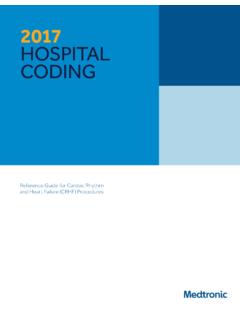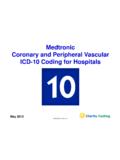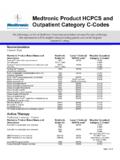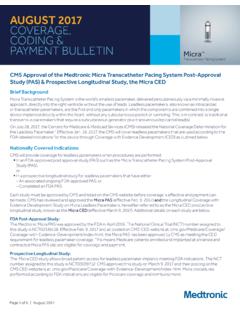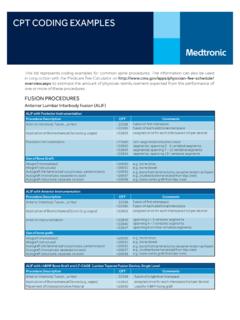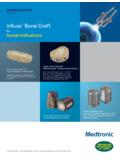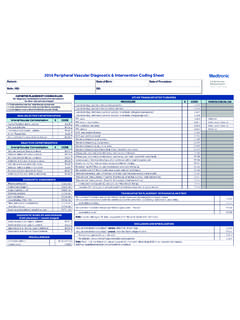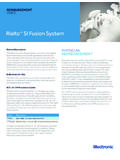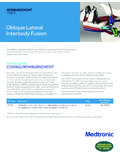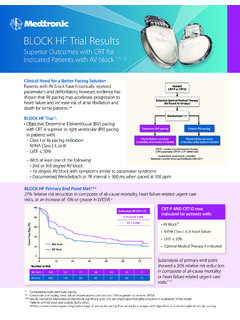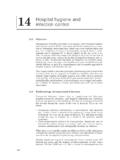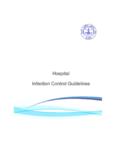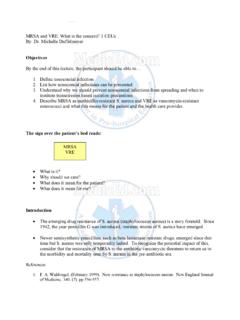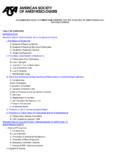Transcription of RELIEVE ICU-ASSOCIATED ILLNESS. REDUCE …
1 RELIEVE ICU-ASSOCIATED CRITICAL guide to early mobility as an interventionAn early mobility program may help patients in the ICU, where prolonged immobility is associated with negative outcomes including critical illness and subsequent fact, 25 percent of patients on mechanical ventilation for a week may experience ICU- acquired And immobilized ICU patients also may experience: Delirium Impaired exercise capacity Poorer functional outcomes and quality of life3 How immobility in the ICU affects patientsImmobilized ICU patients are often mechanically ventilated, confined to a bed, and All of which can contribute to the deconditioning of multiple organ systems,4 including.
2 Musculoskeletal Cardiovascular Circulatory5 What s more, critical-care patients at risk for immobility often require prolonged hospital stays the average ICU length of stay (LOS) is For many ICU patients, muscle atrophy brought on by prolonged bed rest, sedation, and unavoidable immobilization is a significant ,6 Both weakness and delirium acquired in the ICU are associated with poor long-term physical, functional, and cognitive In fact: Muscle wasting occurs early and rapidly during the first week of critical illness. It s more severe among those with multi-organ (rather than single-organ) Bed rest during critical illness may no longer represent a benign intervention; it s associated with catabolism, atrophy, and ICU- acquired Early mobilization is associated with improved outcomes.
3 It may offer a safe intervention for many critically ill Understanding deliriumDelirium occurs in 60 to 80 percent of mechanically ventilated ICU patients, and 20 to 50 percent of nonventilated And it can result in enormous societal and financial burdens, due to: Increased mortality Prolonged ICU and hospital stays11 For ICU survivors, delirium which represents an acute form of organ dysfunction can contribute to long-term neuropsychological and functional Fluctuating throughout the course of a day,12 delirium manifests as a rapidly developing disturbance of both consciousness and suffering from delirium may have increased risk of.
4 Prolonged mechanical ventilation Catheter removal Self-extubation The need for physical restraints13 Testing of prevention strategies is warranted given the debilitating and persistent effects of ICU- acquired delirium and including mobility can REDUCE deliriumResearchers examined the relationship between delirium and implementing several protocols in 187 ICU They monitored: Prevalence and duration of delirium and coma Early mobilization Mortality Time to discharge Change in residence14 The results were impressive. Odds of delirium were reduced by nearly one half with awakening and breathing coordination, delirium monitoring and management, and early exercise and same patients spent three more days breathing without assistance, with the following results: Increased odds of mobilizing out of bed at least once per day during an ICU stay14 No significant differences noted in self-extubation or reintubation rates14 ICU- acquired weakness Together, critical illness polyneuropathy (CIP) and critical illness myopathy (CIM) make up ICU- acquired weakness.
5 CIP is a complication of severe trauma or infection (critical illness) and affects the peripheral CIM typically occurs in ICU patients who have been treated with multiple CIP and CIM can cause muscle weakness and paresis in critically ill patients during their ICU Risk factors for ICU- acquired weakness include: High severity of illness upon admission Sepsis Multiple organ failure Hyperglycemia (high blood sugar) Prolonged immobilization18 Mobility and ventilator-associated pneumoniaVentilator-associated pneumonia (VAP) occurs approximately 48 to 72 hours following endotracheal VAP occurs in 9 to 27 percent of all mechanically ventilated patients, with the highest risk early in the course of the progressive upright mobility protocol (PUMP) correlated with a reduction in.
6 Neurointensive-care-unit LOS Hospital LOS Healthcare-associated infections Ventilator-associated pneumonia20 The benefits of early mobility in the ICUE arly-mobility protocols in the ICU are becoming more widely adopted to: Mitigate patient suffering Improve patient outcomes both during and after careRecent evidence-based critical care guidelines and care bundles feature sedation-management, delirium-monitoring, and mobility Yet implementing early-mobility protocol in the ICU remains highly To improve outcomes and REDUCE costs for ICU patients across healthcare systems, research supports instituting planned, structured early-mobility programs because.
7 23 Early mobilization of critically ill patients is beneficial and can be incorporated into daily clinical Early passive, active, and combined progressive mobilization can be safely initiated in Adult patients receiving early mobilization have fewer ventilator-dependent days, shorter ICU and hospital stays, and better functional early mobility worksEarly mobility is the application of physical activity within the first two to five days of critical illness or physical therapy includes: Applying a passive range of movements Encouraging an active range of movements early in the ICU stay10 With early mobility, physical therapy is intensified and applied earlier to critically ill Early mobility includes specific interventions like.
8 Actively mobilizing patients requiring mechanical ventilation Using novel techniques such as cycle ergometry and transcutaneous electrical muscle stimulation10 Early mobility is associated with decreased ICU and hospital Compared to patients receiving usual care, ICU patients receiving an early mobility protocol: Were out of bed earlier (5 days versus 11 days) Had therapy initiated more frequently in the ICU (91 percent versus 13 percent) Had similar low complication rates1 Barriers to early mobility programsMajor barriers to more widescale adoptions of early mobility include.
9 Inadequate staff to deliver physical therapy Lack of equipment Concern regarding patient safety and physiological stability Sedation and ventilation practices Placement of vascular lines Lack of data on efficacy and health-economic evaluation to convince clinicians to apply early Safety concerns can be remedied by appropriately training staff. 101. Morris P, Goad A, Thompson C, et al. Early intensive care unit mobility therapy in the treatment of acute respiratory failure. Crit Care Med. 2008: 36(8): 2238 22432. Nordon-Craft A, Moss M, Quan D, et al.
10 Intensive-care acquired weakness: Implications for physical therapist management. Phys Ther. 2012 92(12): 1494 15063. Cameron S, Ball I, Cepinskas G, et al. Early mobilization in the critical care unit: a review of adult and pediatric literature. J. Crit Care. 2015; 30(4): 664 6724. Zomorodi M, Topley D, McAnaw M. Developing a protocol for early mobilization of patients in a surgical/trauma ICU. Crit Care Res Pract. 2012: 2012: 964547 5. Koukourikos K, Tsaloglidou A, Kourkouta L. Muscle atrophy in intensive care patients. Acta Informatica Medica. 2014;(6); 406 410.
